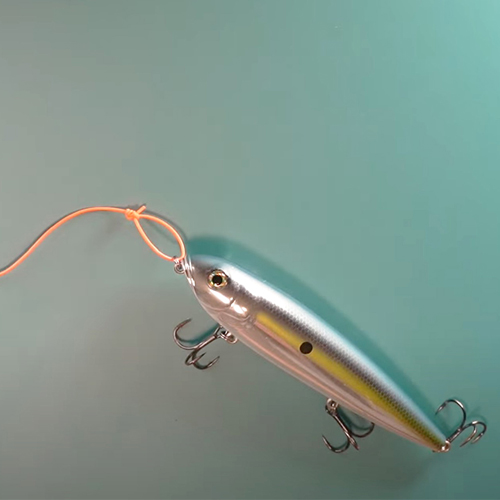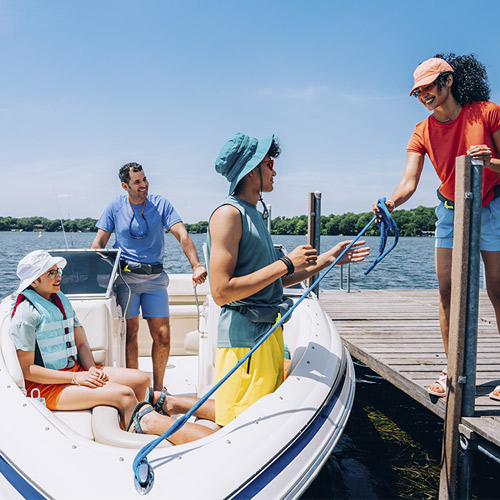Boat Navigation, Rules and Regulations
Since there are different types of boats, boating activities and styles of boating, it is important to know what to expect when you come upon another vessel and what your obligations are. Boat Navigation rules establish actions for boaters to take to avoid a collision.
These are few simple rules that will help you stay safe and enjoy a great day on the water:
- Rule of Responsibility
It is the responsibility of every boat operator to navigate in a reasonable and prudent manner to avoid a collision, taking into account the weather, vessel traffic and the limits of other vessels. Such action should be taken in ample time to avoid a collision and at a safe distance from other vessels. - Maintain a Safe Speed
Safe speed is the speed that ensures you will have sufficient time to avoid a collision and can stop within an appropriate distance. Safe speed will vary depending on conditions such as wind, water conditions, navigational hazards, visibility, surrounding vessel traffic density and the maneuverability of your boat. Always reduce speed and navigate with extreme caution at night and when visibility is restricted. - Keep a Proper Lookout
Failing to keep a sharp lookout is the most common cause of collisions. Every operator must keep a proper lookout, using both sight and hearing, at all times. Watch and listen for other vessels, radio communications, navigational hazards and others involved in water activities.
Steering and Sailing Rules
There are boat navigation rules that every operator must follow when encountering other vessels. The give-away vessel is the one required to take early and substantial action to keep well away from other vessels by stopping, slowing down or changing course. The stand-on vessel is the vessel that must maintain its course and speed unless it becomes apparent that the give-way vessel is not taking appropriate action. If you must take action, do not turn toward the give-way vessel or cross in front of it. These are some of the different boating scenarios:
Meeting Head-on: Power vs Power
In this case neither vessel is the stand-on vessel. Both vessels should turn to the right (starboard) to avoid collision. Therefore, communication is needed between the two. The most common response, is to signal an intention to pass port-to-port with one short blast.
Meeting Head-on: Power vs Sail
In this case the power-driven vessel is the give-away vessel. The sailing vessel is the stand-on vessel. The power-driven vessel must take early and substantial action to keep clear of the sailing vessel.
Overtaking: Power vs Power
The vessel that is overtaking another vessel is the give-away vessel. The vessel being overtaken in the stand-on vessel. As a give-away vessel, you must take early and substantial action to keep clear of a stand-on vessel. Sounds signals are also required.
Overtaking: Power vs Sail
The vessel that is overtaking another vessel is the give-way vessel, regardless of whether it is a sailing or a power-driven vessel. The vessel being overtaken is always the stand-on vessel.
Crossing Paths: Power vs Power
The vessel on the operator port is the give-away vessel. The vessel on the operator starboard is the stand-on vessel. As the give-way vessel, you must take early and substantial action to keep clear and avoid crossing the stand-on vessel.
Crossing Paths: Power vs Sail
The power-driven vessel is the give-away vessel. The sailing vessel is the stand-on vessel. The power-driven vessel must take early and substantial action to keep clear of the sailing vessel.
Video courtesy of Boat-Ed.com
Learn how to anchor your boat properly in our next section.
KEEP LEARNING

How to Tie the Non-Slip Loop Knot
The non-slip loop knot is a popular and reliable choice for securing hooks, lures, and other tackle to your fishing line.
LEARN MORE

Socials
Take me fishing social media links
LEARN MORE

TakeMeFishing x Teen Vogue
Join us on a creative journey as fashion designer Ahmrii Johnson walks us through her collaborative vision and process with Teen Vogue and fashion brand, Rentrayage, to create a special piece.
LEARN MORE


.png?lang=en-US&ext=.png)